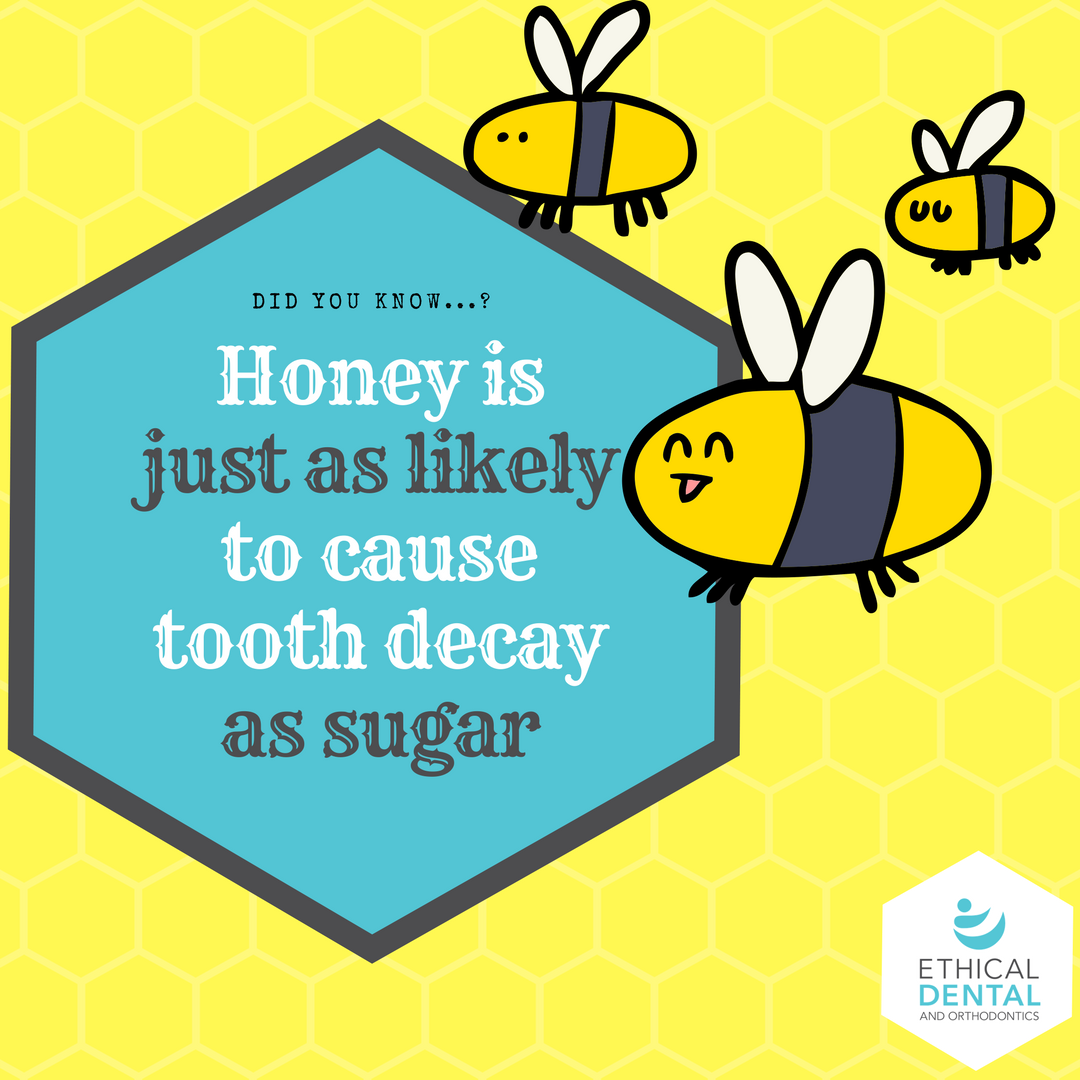Did you know... Honey is just as likely to cause tooth decay as sugar?
Honey is an amazing substance. To make, it takes thousands of bees flying far and wide to collect nectar, which they meticulously store in masterfully crafted honeycomb, and fan with their wings until it's just right.
Sharing the fruits of the honey bee's labour is a fantastic way to enjoy a cup of tea, but even though it's all natural, unfortunately the main ingredient is sugar.
In a direct comparison, honey is a better choice than sugar. As well as glucose, fructose and water, honey can contain;
enzymes
antioxidants
vitamins
minerals
However the exact makeup of ingredients depends on the nectar source, and therefore varies by location and season. All honey has antibacterial and antimicrobial qualities, and a low pH which reduces bacterial growth.
Some types like Manuka honey are popularly used to treat sore throats and mouth ulcers.
Honey typically has a higher percentage of Fructose than Glucose, which means that it has a lower Glycemic Index compared with table sugar (which is usually a 50/50 Fructose/Glucose mix).
As Fructose usually tastes sweeter than Glucose, this will often mean that comparatively less honey is required to reach a satisfying sweetness compared with sugar.
From a dental health perspective
The bacteria which cause tooth decay enjoy sugar as much as we do, and since honey is mostly sugar, regular consumption increases the risk of getting a cavity.
So if you enjoy a spot of honey in your tea, we recommend saving this for special occasions -- especially if you like to have more than a couple of cups per day.
If you would like to discuss your dental health book a consultation with Dr Kate Amos or Dr Sam Rosehill at Ethical Dental on 6652 3185 or book online.
To learn more about how your diet affects may affect your dental health check out our articles Did you know… Fructose doesn’t effect insulin the same as refined sugar? and 'Did you know… Diet soft drink is harmful to oral health?


